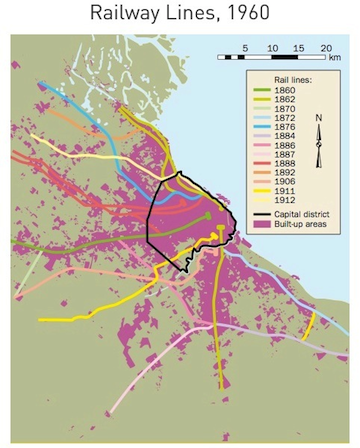Quantifying place
Analyzing drivers of pedestrian activity in dense urban environments
+ Yuan Lai, Constantine Kontokosta
Abstract
Quantifying place: Analyzing the drivers of pedestrian activity in dense urban environments
Landscape and Urban Planning
Volume 180, December 2018, Pages 166-178
Understanding pedestrian behavior is critical for many aspects of city planning, design, and management, including transportation, public health, emergency response, and economic development. This study bridges in-situ observations of pedestrian activity and urban computing by integrating high-resolution, large-scale, and heterogeneous urban datasets and analyzing both fixed attributes of the urban landscape (e.g. physical and transit infrastructure) with dynamic environmental and socio-psychological factors, such as weather, air quality, and perceived crime risk. We use local pedestrian count data collected by the New York City (NYC) Department of Transportation (DOT) and an extensive array of open datasets from NYC to test how pedestrian volumes relate to land use, building density, streetscape quality, transportation infrastructure, and other factors typically associated with urban walkability. We quantify, classify, and analyze place dynamics, including contextual and situational factors that influence pedestrian activity at high spatial–temporal resolution. The quantification process measures the urban context by extracting rich, yet initially fragmented and siloed, urban data for individual geolocations. Based on these features, we then construct contextual indicators by selecting and combining features relevant to pedestrian activity, and develop a typology of place to support the generalizability of our analysis. Finally, we use multivariate regression models with panel-corrected standard errors to estimate how specific contextual features and time-varying situational indicators impact pedestrian activity across time of day, day of the week, season, and year. The results provide insights into the key drivers of local pedestrian activity and highlight the importance accounting for the immediate urban environment and socio-spatial dynamics in pedestrian behavior modeling.



